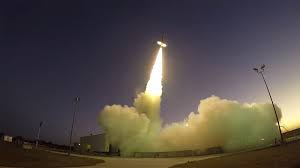After many months of planning, China has become the first country in history to successfully land a spacecraft on the far side of the moon.
As reported by Science News, the Chang’e-4 successfully touched down on the far side of the moon January 2, the culmination of the country’s space endeavors up to this point. Landing at exactly 9:26 PM EST, the craft and the associated Yutu 2 rover will be exploring the 186-kilometer-wide Von Kármán crater.
Given how little we know of the far side of the moon, this mission has the potential to tell us a wealth of new information about our planet’s natural satellite. Located within the South Pole–Aitken basin, the Von Kármán crater is one of the oldest impact areas on both the moon and in our solar system as a whole. Studying it extensively has been a dream of scientists for many years and is only now becoming a reality.
Taking both the age and impact depth of the basin, one theory that may soon be put to the test is whether or not the South Pole-Aitken basin contains a look below the moon’s crust. If this turns out to be true, scientists would have a clearer understanding of how the moon came to be and what its interior was composed of than ever before. This would be further supported by radar probing that will be done by the rover, as well, which intends to detail the composition below the moon’s surface.
Additionally, this mission is set to give us the clearest view possible of what the far side of the moon actually looks like. Yutu 2 will be taking panoramic photos of the moon as it explores, something that has never been done before.
Most importantly, this mission will involve testing the various radiation and particles present on the moon. The end goal of such experiments would be to determine whether plants and insects could be able to grow and develop off-planet, potentially opening the doors for sustainable moon colonization.
Given that direct communication between the lander and Earth is not possible, all reports from the mission will be relayed between the two sources by the Queqiao satellite that was launched last May. This means it will take some time before the rover’s discoveries can actually be sent back to the planet, though whatever is found will certainly be a game changer for the study of the cosmos.












